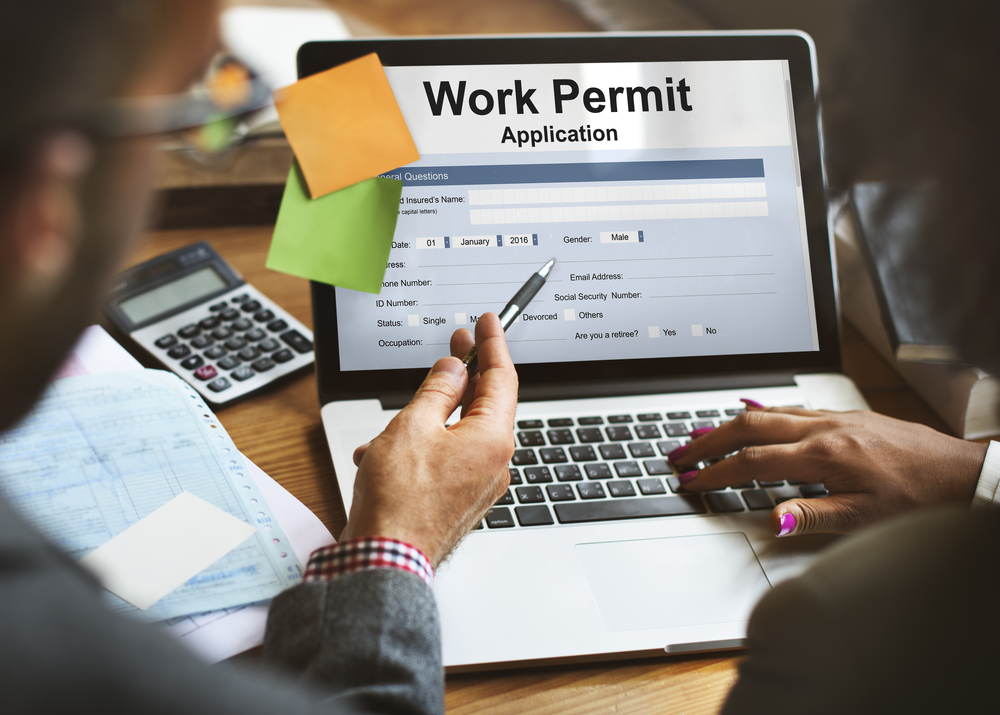If you’re planning to work in another country for a short time, understanding the process of getting legal permission is important. Many look for short-term job opportunities abroad but aren’t sure how the system works. Whether aiming for a seasonal job, a skilled role, or a company transfer, knowing how to apply and what to expect helps you avoid costly mistakes.
In this guide on Temporary Work Permits: What You Need to Know, you’ll learn the key steps, legal requirements, and common mistakes to avoid. It’s written in clear terms to help you make smart, confident decisions.
What Is a Temporary Work Permit?
A temporary work permit allows someone to work legally in a country for a short period. It’s not permanent and usually comes with a set end date. Countries issue these permits to fill job gaps or meet short-term labour needs. You can’t work legally without one if you’re not a citizen or permanent resident.

It’s required even if the job is short. Some permits are specific to industries like agriculture, tourism, or skilled trades. Each country has its own rules, but all require a job offer before you apply. Always check official immigration sites before starting.
- Quick definition in simple terms
- Who it’s for (foreign workers, seasonal workers, interns, specialized professionals)
- Basic idea: allows someone to work legally in a country for a limited time
Read: How to Transition from a Student Visa to Permanent Residency
Who Needs One and Why It Matters
Anyone who plans to work in another country for a limited time needs a temporary work permit. This includes seasonal workers, international interns, skilled labourers, and company transfers. Without one, working is illegal and can lead to fines, deportation, or visa bans. Employers also face legal trouble if they hire without proper authorization.
Having a permit protects your job, ensures fair pay, and gives access to benefits like health care or worker rights. It also proves you’re not taking work from a local unfairly. If you’re serious about international work, getting a permit is the right first step.
- People coming from another country to work temporarily
- Employers who want to hire foreign workers
- Travelers converting visas to work permits
- Why getting one legally matters: job security, legal protection, access to benefits
General Requirements
Most countries ask for the same basic documents. You’ll need a valid passport and a signed job offer or contract. Some applications require proof of education or work experience. A clean criminal record is often needed, plus health tests in some cases. You might need to show you have enough money to support yourself before the job starts.
Some employers must prove no local worker could fill the job. Always check the specific country’s checklist. Missing one document can delay or cancel your application. Preparing everything early makes the process faster and easier for everyone involved.
- Valid passport
- Job offer or employment contract
- Medical tests (if required)
- Proof of qualifications or experience
- Clean criminal record (in most cases)
Step-by-Step Process to Apply
First, secure a job offer from a qualified employer. Then, research the work permit type that fits your job and country. Collect all necessary documents, like your passport, contract, and proof of qualifications. Submit your application either online or through a local embassy. Some countries ask for biometrics or an interview.
After submitting, wait for processing this can take days to months. Once approved, check the work start and expiry dates. Follow all entry instructions carefully. Mistakes here can delay your arrival or ability to work. Always double-check application forms before sending them in.
- Step 1: Confirm job offer from a legal employer
- Step 2: Check the specific country’s permit type and eligibility
- Step 3: Gather all required documents
- Step 4: Submit the application (online or through embassy)
- Step 5: Attend biometrics or interview (if required)
- Step 6: Wait for approval and the start date
How Long It Lasts
Temporary work permits usually last from six months to two years. Some can be renewed, others cannot. The length depends on the job type, contract, and country rules. If your job ends early, the permit may become invalid. Some countries allow you to switch employers or apply for a different visa once you’re inside the country.

Others require you to leave and reapply. Overstaying can lead to bans or future rejections. Always know your expiry date and your options to extend or change your status. Staying legal is key to future work opportunities and avoiding legal issues.
- Typical duration (6 months, 1 year, 2 years)
- Can it be extended or converted to permanent residency?
- What to do when it expires
Read: Top 5 Visa Options for Professionals Moving to the UK
Common Types by Country (Simple Overview)
USA: H-2A (farm work), H-2B (seasonal non-farm), L-1 (intra-company transfer).
Canada: LMIA-based permits, Global Talent Stream for tech and skilled workers.
UK: Temporary Worker routes, Seasonal Worker visa for agriculture.
Australia: Temporary Skill Shortage (TSS) visa for in-demand roles.
Each permit serves specific industries and needs. Most require employer sponsorship and a clear job offer. Application steps vary, but all follow a structured legal process. Always check the latest rules before applying, as immigration laws can change quickly based on labour demand or policy shifts.
- USA: H-2A (agriculture), H-2B (non-agriculture), L-1 (intra-company)
- Canada: LMIA-based, Global Talent Stream
- UK: Temporary Worker Visa, Seasonal Worker
- Australia: Temporary Skill Shortage (TSS)
- Quick list with no fluff, just purpose + main use
What to Watch Out For
Scams are common. Be wary of fake job offers or agents promising guaranteed permits. If a job seems too good to be true, it probably is. Avoid paying large fees to unverified sources. Always confirm your employer is registered and approved to hire foreign workers. Watch deadlines, especially for renewals or medical tests.
Some jobs don’t qualify, so don’t assume you’re eligible without checking. Overstaying can lead to serious legal trouble, including future bans. Read every form and contract carefully. If you’re unsure, get help from a licensed immigration consultant. Trusting the wrong people can cost you money and time.
- Scams or fake employers
- Deadlines and renewal limits
- Overstaying and penalties
- Not all jobs qualify must be in-demand or sponsored
Benefits of Doing It Right
Getting a temporary work permit the right way brings real advantages. You’ll work legally and avoid legal trouble. It protects your rights and helps ensure fair treatment. Many countries offer tax benefits, health insurance, or worker protections to legal employees. In some cases, holding a valid work permit can help you apply for permanent residency later.
You also build a stronger job history, which helps your future applications. Employers prefer workers with clear legal status. With a permit, you can focus on your job and long-term goals instead of worrying about immigration problems or visa risks.
- Legal work status
- Chance to build long-term employment record
- Pathway to permanent residence in some countries
- Access to healthcare and tax benefits in some cases
How Employers Help (or Must Help)
Employers play a key role in temporary work permits. Most need to sponsor you and sometimes prove they couldn’t find a local worker first. This often means they apply for approval before you can apply for your permit. Some companies also cover costs like visa fees or flights. A good employer guides you through the process and helps with paperwork.
They should be clear about job duties, pay, and permit length. If your employer avoids the legal process, walk away. Without proper support, your permit could be denied or cancelled, leaving you without legal work status.
- Most countries require employer sponsorship
- Employers must prove no local could fill the job
- Employers may cover costs in some countries
Costs You Should Expect
Temporary work permits come with costs. These may include government fees, medical exams, translations, and document notarization. Some people also pay for immigration help, though this is optional. You may need to cover travel, health insurance, or background checks. In some cases, the employer pays part or all of the cost, especially for in-demand jobs.
Don’t trust anyone asking for large payments upfront without clear paperwork. Always get receipts and written agreements. Knowing the full cost helps you plan better and avoid debt. Check the official immigration site to see the latest fee structure before applying.
- Application fees
- Legal or agency help (optional, but helpful)
- Travel and document costs
- Insurance or medical checks
Helpful Tips for a Smooth Process
Start early. Permit processing can take weeks or even months. Use official government websites for instructions never rely only on social media or hearsay. Keep copies of every form, ID, and receipt. Double-check every form before submitting. Stay organized by creating a folder for all documents. If the country requires an interview, prepare well and be honest.
Don’t skip required tests or paperwork. Following timelines strictly missing a deadline can cancel your application. Keep in touch with your employer throughout. If something feels off, ask questions or get advice. Staying informed helps you avoid delays.
- Double-check job offer authenticity
- Apply early processing can take weeks or months
- Keep copies of everything
- Follow instructions exactly errors cause delays
When You Need a Lawyer or Expert
If your case is complex, get legal help. You may need an immigration lawyer if you’ve been denied before, overstayed a visa, or are switching status. Some countries have changing or unclear rules, and experts can make sure you’re on the right path. A licensed consultant or lawyer helps you avoid costly mistakes and speeds up the process.
If your employer isn’t sure what to do, it’s smart to hire someone who knows the legal steps. Always choose a certified immigration expert. Don’t rely on online forums or guesswork when your job and legal status are at stake.
- If your case is complex (changing status, past refusals)
- If the employer doesn’t guide you
- If rules seem unclear or vary by region
Links to Official Resources
Always use trusted government websites when applying. These sites give updated information, document checklists, and contact details. Examples include.

Avoid third-party sites unless they are verified. Never submit your application through unofficial portals. Bookmark the right links, and check them regularly for updates. If you get stuck, contact the official immigration helplines. These are the safest and most accurate sources available.
- Add links to trusted government sites (e.g. USCIS, Canada.ca, GOV.UK)
- Encourage users to always use official sources
Read: Breaking Down Canada’s Express Entry System: How It Works
Temporary work permits allow foreign workers to take short-term jobs in another country legally. They are required for seasonal roles, internships, skilled labour, or company transfers. To get one, you typically need a job offer, valid documents, and meet specific requirements set by the destination country.
The process involves applying through official channels, attending interviews or medical checks if needed, and waiting for approval. It’s important to follow the rules closely, avoid scams, and stay aware of deadlines. Getting a valid permit ensures legal protection and fair pay and may even open doors to long-term opportunities.
APPLY NOW
Important Notice
Staff of JobsGist will never contact you or ask you to contact them for any deal, assistance, or payment. Anyone claiming to represent us in such a manner is not affiliated with us and should be considered a scammer.
Disclaimer: This article is for informational purposes only. We are not visa agents and do not offer any form of assistance beyond announcing verified job vacancies.
